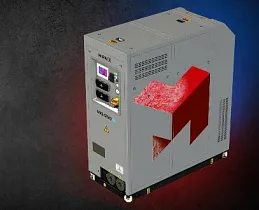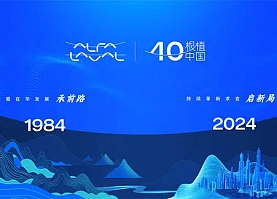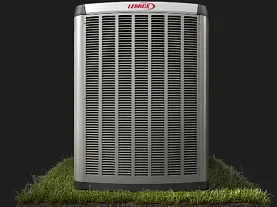CoolKit is renowned for its conversions of panel vans in the temperature controlled transport industry, but an increase in demand for box body vehicles has led to an expansion at the company. We speak to Design Engineer, James Smith, to discover how CoolKit has managed the creative process to transform paper plans into a vehicle with an impressive payload.

The Blank Canvas
“Because it’s a new product line for us, we’ve had to essentially start from scratch with the structure, even the basic drawings,” explains James.
“Having the creative freedom to produce this product has been a rewarding challenge for me.” James is used to working on large vehicle fleets and was particularly proud when CoolKit’s first large batch of refrigerated box vehicles rolled off the production line in 2017. He has been key to setting up new and improved production processes for CoolKit, helping the company establish themselves as a quality box body provider.
“It’s a blank canvas. I see it as a good thing because you’re not restricted to how things have been done previously. At CoolKit, we’re experimenting more with the process because we have the freedom to try things out. If it works, fantastic, we’ll release it. If it doesn’t, we’ll change it. There’s a lot more scope for prototyping and getting things right instead of sticking with what you’ve already got because it’s how it’s always been done in the industry.
What This Means For Customers
Developing a specialist refrigerated box vehicle has brought a wealth of customer benefits, most notably the increased payload and flexibility – something James is very pleased with.
“On our latest fleet of 10 box vehicles, we achieved an extra 150kg of load space per vehicle when compared to a competitor’s quote. The customer had originally been quoted a payload of 1050kg, but with a little bit of creativity and the use of innovative composite materials, we’ve delivered the magic 1201kg payload per vehicle. “To do this, we’ve taken away some heavier elements of the construction without compromising on the strength or quality of the product. Over the fleet of 10 vehicles, that’s one and a half tonnes more that can be carried – in effect, we’ve given the customer an extra refrigerated vehicle in terms of space.
The additional payload has helped the customer to reduce outlay – effectively providing an extra vehicle without having to add an extra driver and the associated vehicle costs – plus two trips can become one, helping to cut down on CO2 emissions and the customer’s carbon footprint. “The payload on box vehicles is massive and it’s definitely something I find really satisfying when they roll off the production line,” says James.
Why Box Vehicles Stand Out
Unlike panel vans, which are confined to a specific size and height, the box body is a freestanding structure that can be customised. With a box body, CoolKit can build anything up to 2.6m wide and 4m tall, making the vehicle bespoke to the client’s needs.
This degree of flexibility is the ultimate tick in the box for the customer. “On a box body, your only limitations are legal requirements. We can make them any size, with doors placed wherever they need to be. Basically, whatever the customer wants from a refrigerated van, they can have with a box body.
“The sheer range of what we can do is huge – it’s never just a case of creating a box vehicle or converting a panel van. We often just get customers asking whether something is possible! We’re here to help the customer create a vehicle that meets their needs.
Boxing Clever For The Future

James believes the box body could take off in a big way for CoolKit, while complementing their existing panel van offer.
“We love looking after the businesses with panel van conversions that work for them and we will always help every single customer with their needs,” he says. However, box bodies have the potential to overtake them in popularity. “From a CoolKit perspective, it’s important that we find a balance for the company, which secures jobs and brings in business, rather than predicting a trend.
“I can see production numbers growing steadily for a few years while we decide whether to branch out into bigger vehicles – which there’s a massive market for – or stay within the up to 7.5 tonne market. We just need to perfect the core product, which I’m confident we will.


 James believes the box body could take off in a big way for CoolKit, while complementing their existing panel van offer.
“We love looking after the businesses with panel van conversions that work for them and we will always help every single customer with their needs,” he says. However, box bodies have the potential to overtake them in popularity. “From a CoolKit perspective, it’s important that we find a balance for the company, which secures jobs and brings in business, rather than predicting a trend.
“I can see production numbers growing steadily for a few years while we decide whether to branch out into bigger vehicles – which there’s a massive market for – or stay within the up to 7.5 tonne market. We just need to perfect the core product, which I’m confident we will.
James believes the box body could take off in a big way for CoolKit, while complementing their existing panel van offer.
“We love looking after the businesses with panel van conversions that work for them and we will always help every single customer with their needs,” he says. However, box bodies have the potential to overtake them in popularity. “From a CoolKit perspective, it’s important that we find a balance for the company, which secures jobs and brings in business, rather than predicting a trend.
“I can see production numbers growing steadily for a few years while we decide whether to branch out into bigger vehicles – which there’s a massive market for – or stay within the up to 7.5 tonne market. We just need to perfect the core product, which I’m confident we will.





